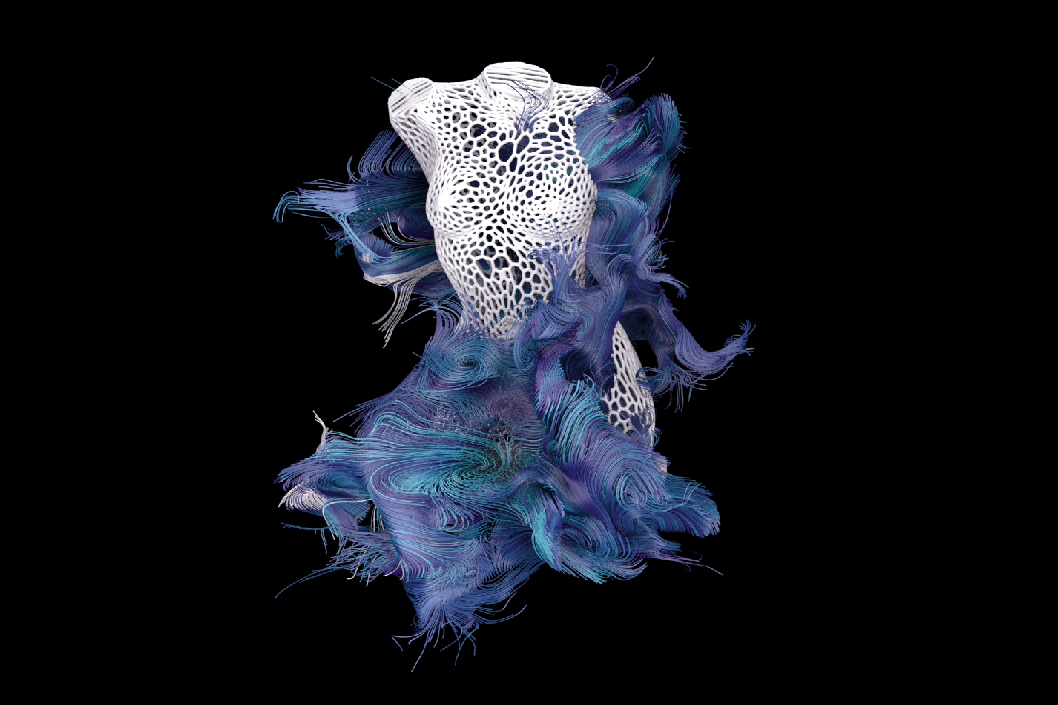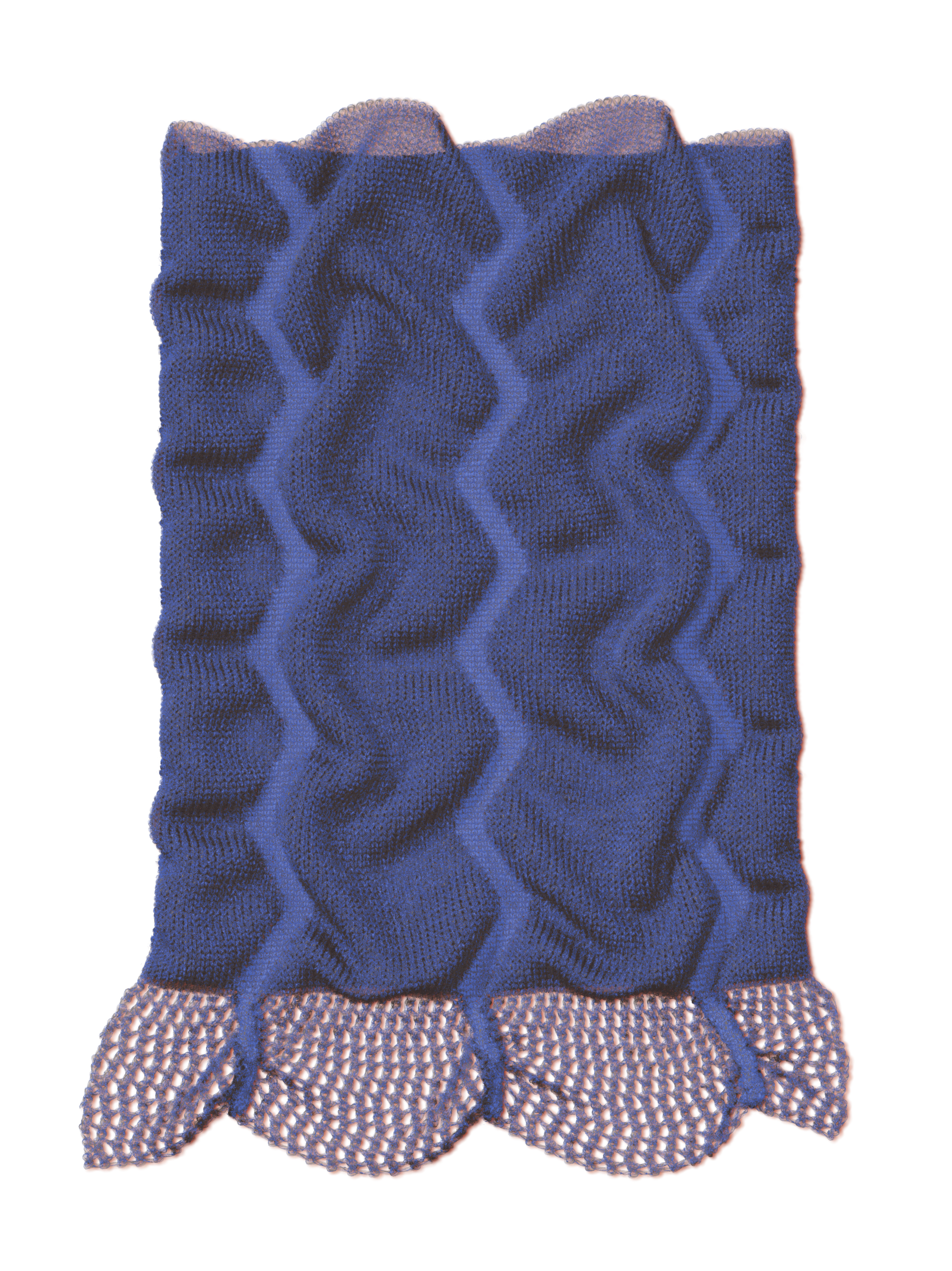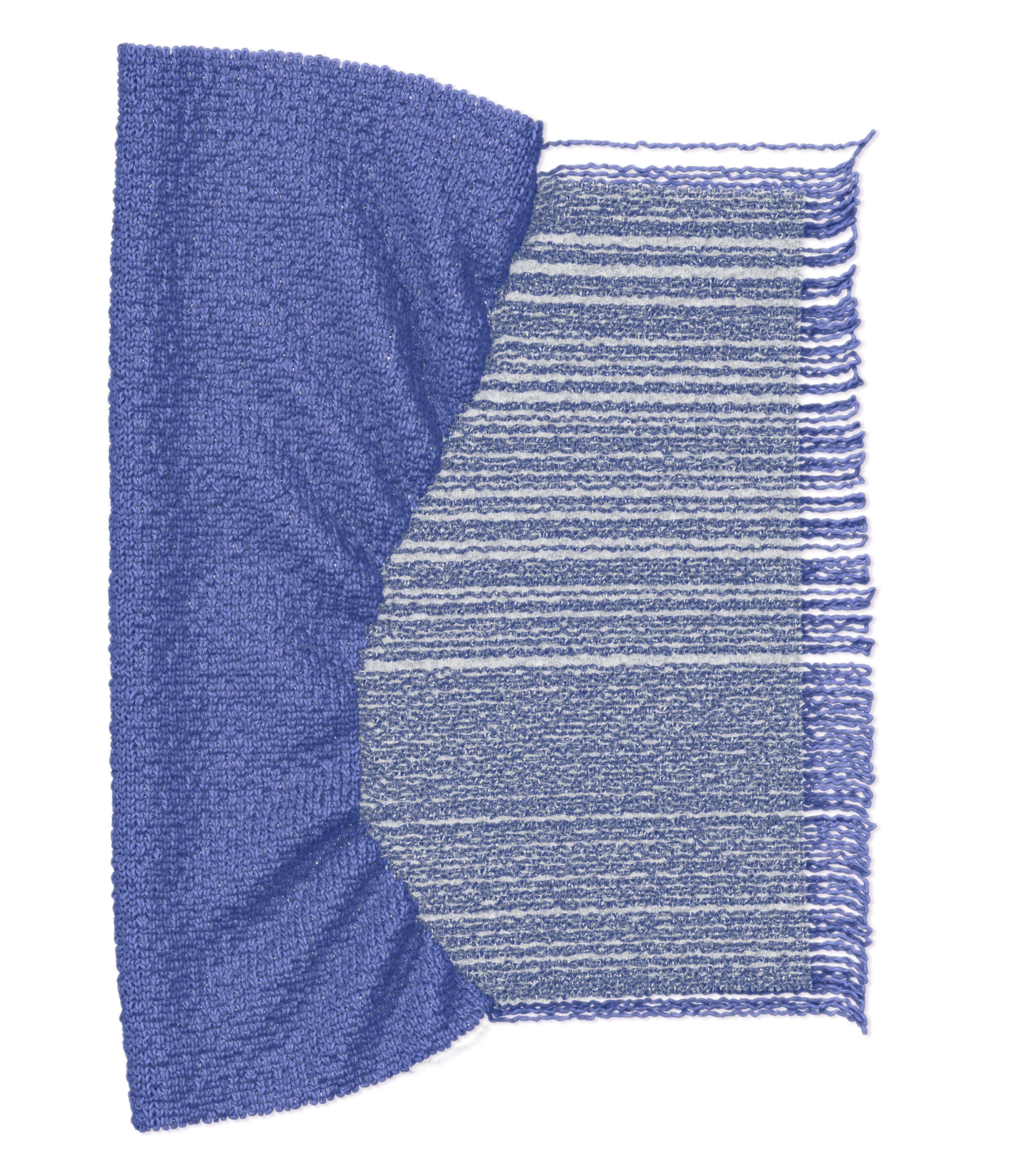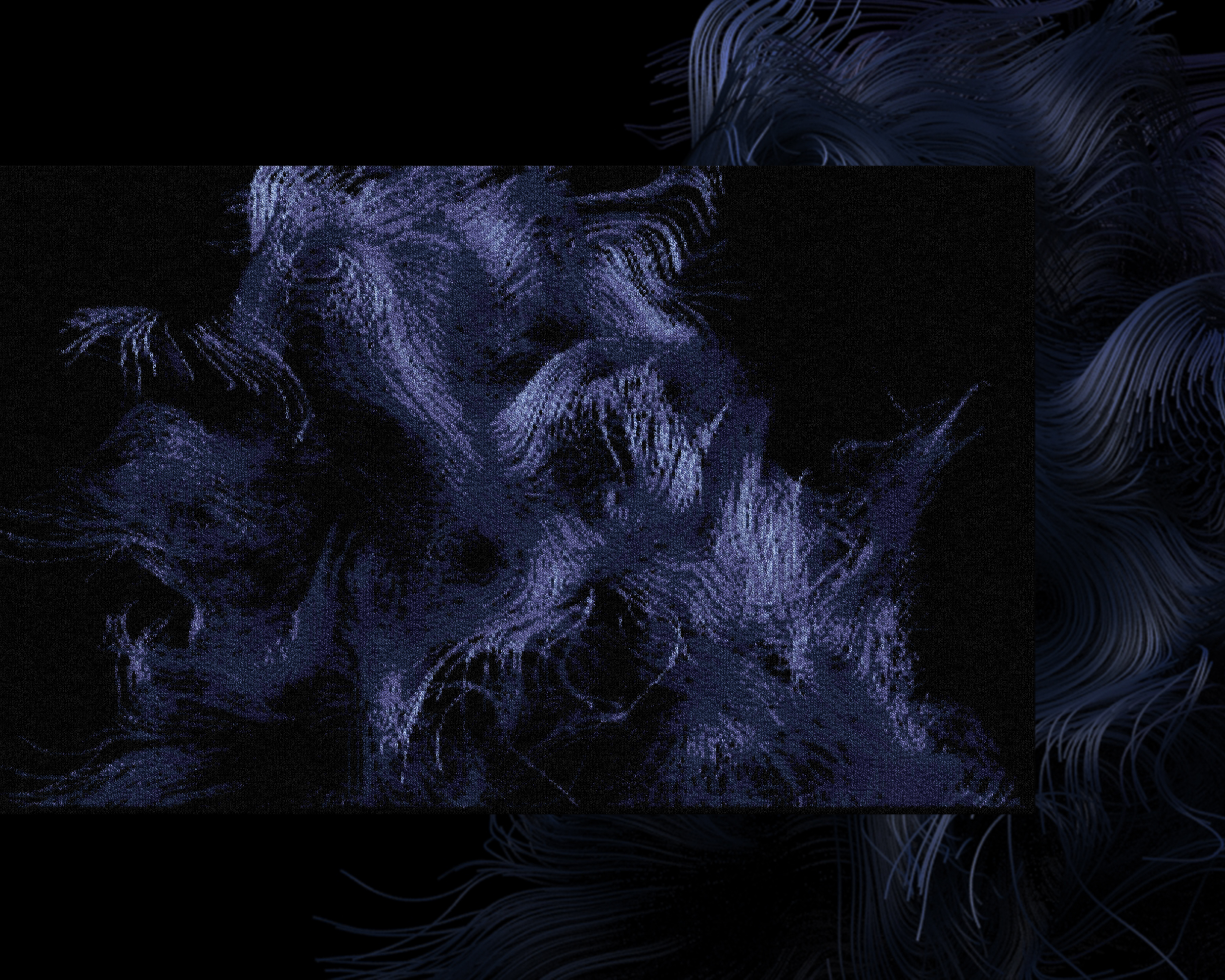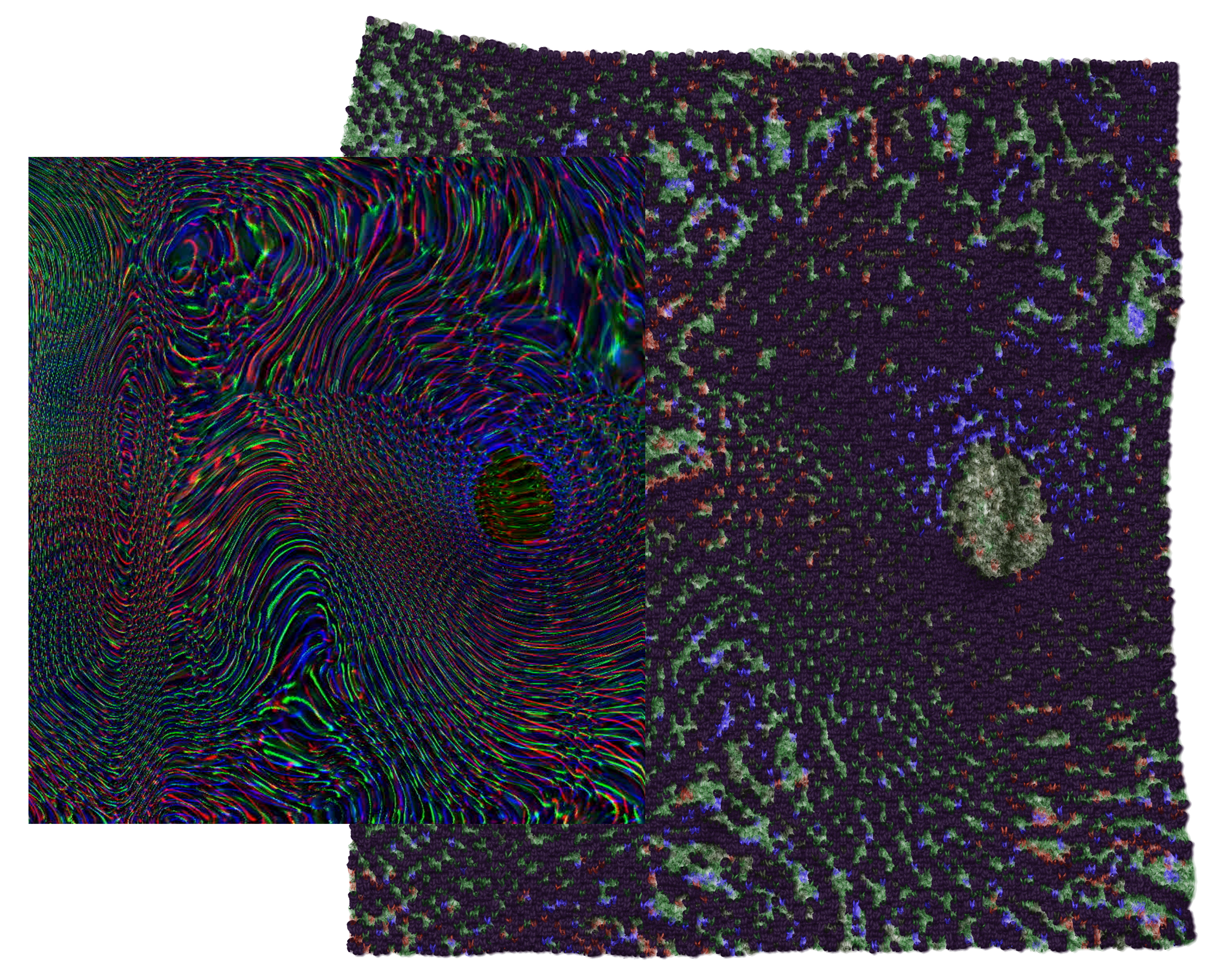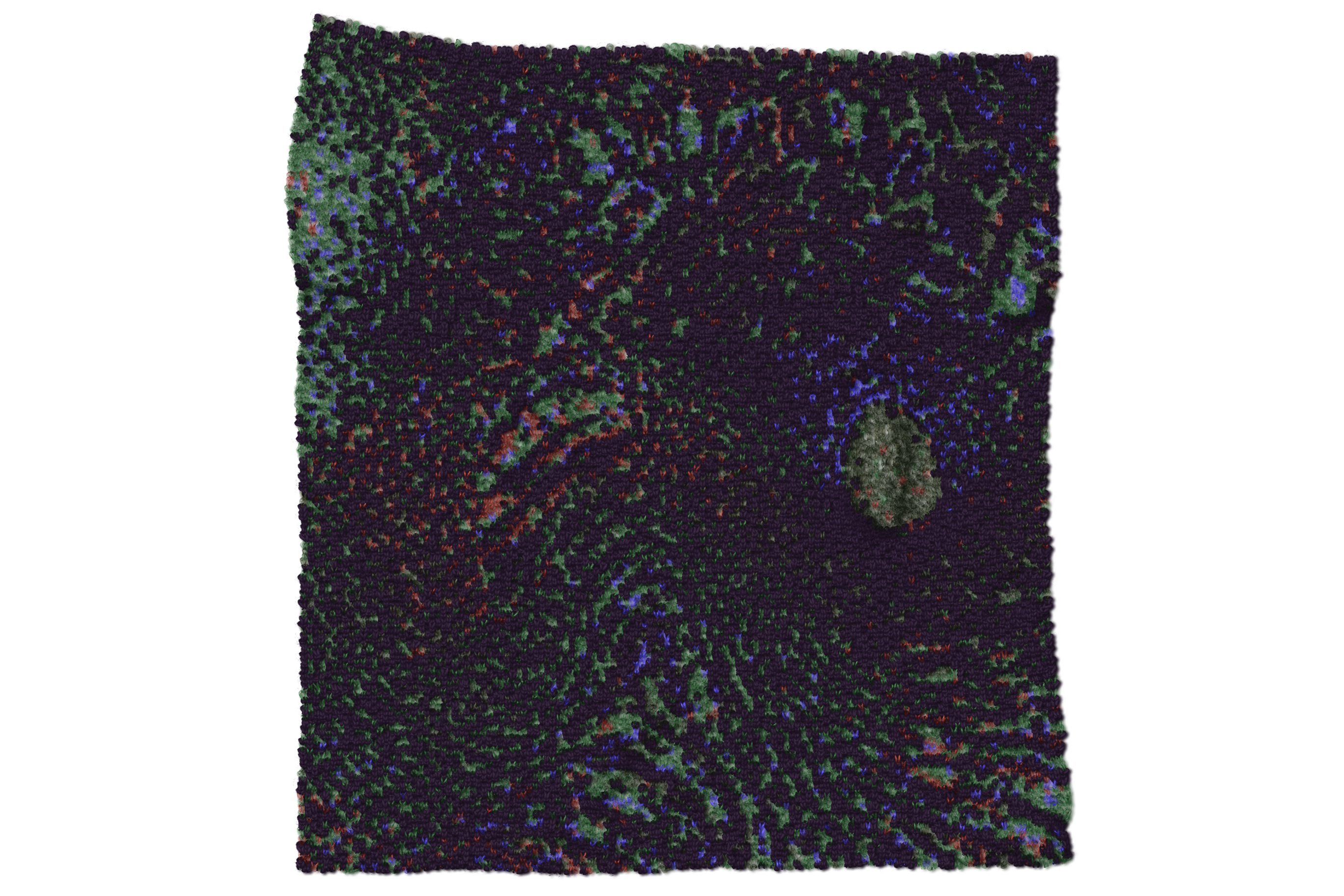In March this year we announced the winners of the Shima Seiki Student Competition 2021, one of whom was Linxi Zhu, an up and coming designer we had also profiled in New Designers 2019: Seven Knitters to Watch back in 2019. In this article, we take a look at Linxi’s latest work.
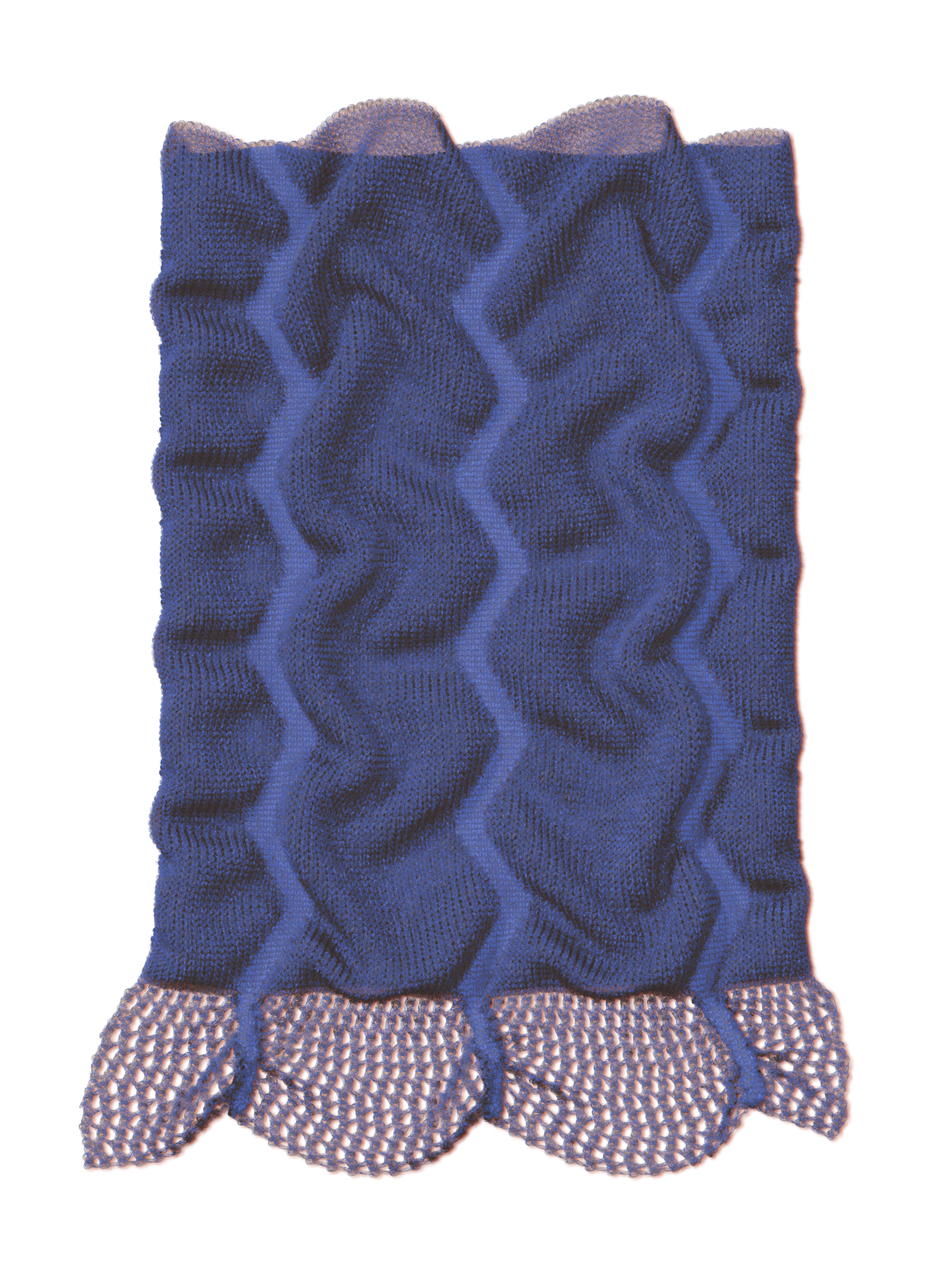
Linxi Zhu is a fashion designer and a digital fabric innovator and is currently a final year student studying fashion at the Royal College of Art. Linxi starts by telling us her design philosophy: “Knitting is not only a way of constructing fabrics and garments but also a mindset of thinking. Forming identity, community and aesthetic, stitch by stitch, with imagination.”
Linxi creates virtual fashion with her own materials and takes the body as a media and fashion as a tool to communicate with the surroundings. Her work focuses on building a connection that transcends the fashion from a physical platform onto a digital one, while exploring digital assets’ uniqueness. Moreover, she challenges the current existing fashion fabrics and pushes the boundaries of digital fashion materiality.

Linxi’s Wave Illusion is a knitwear fashion collection inspired by the visual motion of natural waves; a simulation of a wave-like motion that a human body creates during movement.
“My innovation direction is virtual knitting. Virtual knitting has its unique properties – it is modifiable in perspectives, parameters and constructions. This notion inspired by this reality helped me created my own virtual world based on it,” says Linxi.
“To me, it presents itself as space where physical production is not required at the end. Instead, my directions of creating virtual knitting focus on its differences from the currently existing fashion materials. I want the outcome to bring out diversity to virtual fashion materials, allowing people to experience a new sense of surprise and excitement of blending nature.”
Linxi continues: “Digitally, I took visual information from my research and then translated it into digital fabric programming to form the digital-only conceptual mood board. By researching the wave motion, my designs took the forms of the fabric wave from my 3D model animation.”
Instead of the physical production of the design alongside the process, Linxi’s design process is mostly on digital software – 3D design software Cinema 4D and Houdini for creative direction and inspiration, and Shima Seiki’s Apex SDS-ONE for virtual sampling. By using Shima’s virtual rendering software, it enabled her to translate her visual language onto the knit language, able to be read by the machine.
When knitwear structures and garment patterns can be simulated through digital approaches, Linxi explains, fashion is already undergoing a transformational process, from a traditional one to a new realm with cutting-edge technologies.
“I have realised that that fashion has an enormous potential to merge with other world-leading industries to become more eco- friendly, which in turn can look to rectify the stigma of fashion being one of the most polluting industry in the world. Digital data could be one of the new raw material to inspire future fashion, thus the challenge for me is that to mix technology with knitting to take the current fashion system further.”

Subscribe To Our Newsletter
Join our mailing list to receive the latest news and updates from our team.


